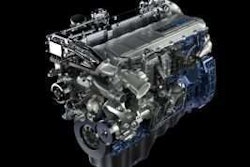
Federal Excise Tax in the commercial truck market is a 12-percent tax issued on the first retail sale of a taxable body, chassis or tractor. It is factored into the total cost of a truck when sold and paid by the purchaser. In the commercial truck dealer market, it is the responsibility of the dealer to issue and collect the tax, as well as provide the tax to the IRS.
FET also must be assessed on previously-untaxed components that are added to a commercial unit for the following highway transportation functions: loading and unloading, maintenance or safety of the unit, preservation of cargo, comfort or convenience of the drivers or passengers.
Always a tricky subject, FET has become a hot topic in the dealer market due to a recent rise in the popularity of glider kits.
“As with many areas of the excise tax regulations there are too many gray areas where the code, court cases, revenue rulings and procedures, private letter ruling and chief council advice do no address specific situations,” says Greg Althardt, partner with CliftonLarsonAllen’s Truck and Trailer Dealership group.
Even though gliders are produced through the remanufacturing and rebuilding of used components, they can fall under the requirements of FET. According to Althardt, there are two tests to verify if a previously taxed modified unit, known as a donor unit, will be subject to FET.
Nature of the modification: If the modification changes the transportation function of the unit, restores a wrecked unit into a usable unit or extends a unit’s useful life, that modification is subject to Federal Excise Tax.
75-percent rule: If the cost of a modified unit exceeds 75 percent of a comparable average retail sale price for a new unit, then the entire unit is subject to Federal Excise Tax.
“FET regulations are very hard to navigate as they are not listed in one concise Internal Revenue Code — one must wade through the bevy of court cases, revenue rulings, revenue procedures, TAMS and other areas of the law and not only that try to piece them all together as usually the specifics of the advice doesn’t necessarily coordinate with their specific situation,” he says. “Nearly all dealers/staff/or fleets are not lawyers or accountants and don’t have the avenues to correctly interpret the law.”
Friday’s ruling was intended to help clarify those points, but Althardt says the ruling did very little to actually do so.
“The information that was sought in the CCA was some very specific guidance on the two issues noted above — what really constitutes a previously taxed article [how much should be retained to maintain the character of the previously taxed article] and what is the retail price that the 75 percent rule should be applied to. We were looking for some bright line tests to spell out when the 75 percent safe-harbor rule could be used and when applicable what is the specific price to be compared to,” he says. “It was not successful in answering the questions and furthermore added one confusing aspect to the calculation of cost of a newly manufactured item.”
Althardt says a question the IRS chose to answer regarding a previously taxed donor unit was a particular revenue ruling that is no longer viewed a current law.
“A clear bright-line test was not given. The current statutory law reverts back to Rev Ruling 91-27, which states as long as the modifications to a previously taxed article do not change the transportation function of a unit or restores a wrecked unit the 75 percent rule may be applied. If the modifications do not exceed 75 percent of the comparable new retail unit no additional FET is due,” he says.
The IRS also failed to answer how much of a previously taxed article must be retained to maintain its classification as “previously taxed.”
“The question still has not been directly answered,” says Althardt. “The CCA would lead a person to believe that if a title from a previously taxed article can be produced then a previously taxed article exists and then the 75 percent rule may be applied.”
Althardt says the IRS will need to release more information if it intends to provide dealers a detailed and specific benchmark for how to assess FET. Last week’s CCA ruling did not provide that.
“I think the CCA did not address some of the overall industry outstanding questions as the industry is just trying to gauge what the rules are to comply with them. It’s hard to play the game with the rules are not clear and consistent,” he says.
For more information on Federal Excise Tax, go to www.cliftonlarsonallen.com/Dealerships, or www.ntea.com/content.aspx?id=23225.








